City Trips in 2023
Exploring new Cities in Germany and Strasbourg
The Saturday before Easter Sunday, I decided to travel to Bonn, the former capital of Germany. It was the first time for me travelling there and I was really excited to see the cherry blossoms in the "Heerstraße" and "Breite Straße". When I arrived there, I wasn't sure, if I should be disappointed or if I should still enjoy the view. The cherry blossoms were just starting to bloom, so I could take some great pictures of the single blossoms. But I really hoped to see the full street full of blooming cherry blossoms. Nevertheless, I tried to make the best out of the trip and continued walking to the city centre with the famous Bonn Minster and the Beethoven Monument. To be honest, I didn't know before, that Ludwig van Beethoven was born in Bonn in 1770, but spotting the statue made me being surprised. Moreover, the Minster, built between the 11th and 13th century, and also the Rokoko style Old Town House at the market square were spectacular. At the market square, I decided to get some lunch at a Nepalese street food stand and afterwards, I went for a piece of chocolate caramel cake in a café. After the little break, I went to the Haribo store to get some sweets, followed by a bubble tea to go at "OneZo".
Since I just planned a one-day-trip, I needed to decide, if I wanted to go for a walk around the Rhine or if I wanted to visit the Poppelsdorf Palace and the Botanical Garden of the University of Bonn. I decided to leave the city centre in the direction of the train station and then to the alley to the Botanical Garden. The palace was closed unfortunately, but luckily, I could enjoy the beautiful flowers and trees in the outer garden and in the greenhouse area. Especially the more than 3,000 species in the greenhouse area were fascinating - with the tree ferns and other indigenous plants from cool cloud forests, the Mediterranean subtropical plants, the rain forest section with banana and bamboo plants or the Victoria house with giant water lilies and orchids.
Since I really wanted to see the cherry blossoms, I followed the development of the blossoms via Instagram and then spontaneously rented a car with a friend 1,5 weeks after the Easter weekend. This time, I was only interested in visiting the "Heerstraße" and "Breite Straße" for a walk and a photo session and this time, I was satisfied and really happy. Nevertheless, I was also surprised, that so many people had time to walk through the streets in the middle of the week, but I could take some amazing shots of the cherry blossoms. It was simply marvellous and like a dream to walk through the pink paradise.
The next destination was the Drachenburg Castle in Königswinter, approximately 20 minutes away from the centre of Bonn by car. We decided to take the "Drachenfelsbahn" to go to the top of the Drachenfels, a hill, which was formed by rising magma that couldn't break through the surface. From the summit, the panoramic view with the Rhine was breathtaking. Even if it was a bit cloudy, it was also possible to spot Bonn from the observation terrace. After having a coffee at the top, we hiked down to the castle, where we made a round tour around the castle first, before we also went in to explore the beautiful inner design. Then, we continued our hike down to the starting point to have a little physical exercise, before being on the road again.
Since we made good time, we decided to make a stop in Cochem at the Mosel. With just over 5,000 inhabitants, Cochem is the second smallest district seat in Germany and was first mentioned in 866 as Villa Cuchema. The whole city still has a kind of medieval flair and all the narrow alleys looked wonderful. Together with the Endertor, the biggest of the three remaining city gates, the church tower and the half-timbered houses, Cochem looked like a cute model city. Since it was already dinner time, we decided to cross the Mosel bridge to find a restaurant on the other river side with an amazing view of the Old Town and the Reichsburg - the main landmark of the city. Since I had to drive back, I had to skip the wine, but as souvenir, I also got a white wine from the Mosel region for drinking at home. So, after the dinner, we had a long tour back to Freiburg, but in total, the trip was worth it.
The weekend before travelling to Norway, I visited Strasbourg for the first time. After Manon picked me up at the train station, we first went to an observation platform of the Barrage Vauban, a defensive work erected in the 17th century, to have a fantstic view over the Ponts Couverts, a set of three bridges and four towers from the 13th century. Somehow, the bridge complex can been seen as entry to the famous and most beautiful parts of Strasbourg - the city centre with the district called La Petite France. The district with its half-timbered houses from the 16th and 17th centuries is crossed by canals of the River Ill and is a UNESCO World Heritage Site since 1988. In my opinion, it was even more romantic and more impressive with its flower decorations than La Petite France in Colmar, which I visited before.
After hanging out a while in the district with having a coffee break, we moved on to the Strasbourg Cathedral. Even if it was exhausting, I'm really glad we walked to the top platform of the church to enjoy the view over the city. From the top, we could also have an amazing view of the Palais Rohan, one of the most important buildings in Strasbourg as its called the pinnacle of French Baroque architecture, but it has also housed three of the city's most important museums - the Archaeological Museum, the Decorative Arts Museum and the Museum of Fine Arts. Since the palace was erected in 1742, it also hosted a number of French monarchs like Louis XV, Marie Antoinette or Napoleon.
Then, we went to a tarte flambée restaurant and afterwards we went to a little cute place for having French tartlets - they were simply super delicious without exaggeration. After the food break, we decided to make another walk to visit the Place de la République, which is surrounded by the Palais Rhin, the National and University Library and the National Theatre. There, we took a seat on the meadow to have a wine and cheese afternoon, while talking and enjoying the sunset.
After my trip to Norway at the end of July, I made a short trip with my friends Hussein, Maike, Anaclara, Aranza, Stephan and Clara. At first, we planned to visit the Dolomites, but since we were quite late with booking, we couldn't find a good offer, so at the end, we made a little tour in Germany at the Mosel-Rhine region, starting in Koblenz. From Freiburg, we took the ICE to Mannheim and the IC in the direction of Koblenz with a beautiful Rhine panorama while looking out of the window. In Koblenz, we also had our AirBnB for the days. Arrived there, we started a walking tour through the city with its many fountains like the "Erfinderbrunnen" or the "Schängelbrunnen. But the main important fountain was the History Column on the Josef-Görres Square. It was donated to the city in 1992 to celebrate the city's 2000th anniversary, but handed over to the city in 2000. The column tells the moving history of the city in ten pictures - from Roman times to today. It was definitely the most impressive fountain, I saw so far.
After exploring the city centre, we moved on and went closer to the famous Deutsches Eck, where the Mosel river joins the Rhine. Nowadays, it's mostly known for the statue of William I, the first Emperor of Germany, erected in 1897 in appreciation of his role in the unification of Germany. On the way, we also passed by the Basilica of St. Castor and the Electoral Palace on the Rhine side. During our promenade along the Rhine river, we also spotted the cable car to the Ehrenbreitstein Fortress on the east bank of the river. We planned to have a wine evening there, but unfortunately, the weather changed and it started to rain, so that we went back to the AirBnB.
The next day, we used our "Deutschlandticket" to take the train to Cochem. Since I already knew the city, I really wanted to show it to my friends too. We also started to walk through the medieval city centre, but this time, I also had the chance to visit the Reichsburg, at least from outside. According to the results of current castle research, the fortress was built around 1100. After it was destroyed in the 17th century, the Reichsburg of Cochem was rebuilt between 1868 and 1877 in a Neo-Gothic style and nowadays, it's the most important and impressive landmark of the city. We enjoyed the panoramic views with the historic city, the Mosel and the surrounding nature, before we went to the other side of the river for more panoramic pictures. After having a short ice cream break, we continued our trip to Trier.
In Trier, we followed the Christophstraße, until we reached the famous Porta Nigra, a large Roman city gate and UNESCO World Heritage Site since 1986, which was built in grey sandstone after 170 AD and is nowadays the best-preserved Roman city gate in Germany. On the one side, it was a spectacular and impressive appearance, on the other side, I always thought, the gate is even bigger. We also took the chance to get in and explore the gate on its different floors, with a great view in the direction of the city centre. After a lunch break, we first went to the historical centre to visit the Hauptmarkt, the central market square with the surrounding half-timbered houses, the market cross and the Petrus Fountain in the middle of the square. From there, it was just a short walk to the High Cathedral of Saint Peter, the Roman Catholic cathedral of Trier and oldest church in Germany. It was also impressive, like the whole city of Trier with its Roman background.
The next place, we visited, were the Trier Imperial Baths, a large Roman bath complex, which was constructed in the early 4th century AD. The building is one of the largest Roman baths in the north of the Alps and has also been on the UNESCO World Heritage Site since 1986. Moreover, underneath the building complex, there's a network of underground paths used by the staff, which can still be visited nowadays. While my friends were still exploring the baths, I decided to take a little walk to the Amphitheatre, erected in the 2nd century, which was supposed to accommodate around 20,000 spectators, and is todays 10th largest Roman amphitheatre, which is still intact. Since it was already afternoon, we decided to take the train back to Koblenz afterwards.
All good things come in threes. So it was time to visit Bonn again. From Koblenz, it was just a short train ride and since Bonn was an interesting city, we decided to go there during the group trip too. Of course, a visit in the Lindt and Haribo stores was mandatory and after grabbing a bubble tea, we walked to the Botanical Garden of Bonn. It was really beautiful again to walk around, especially the greenhouses were a highlight - for example with a growing little pineapple. With Anaclara and Clara, I went to the Rheinaue afterwards, while the others decided to go to a museum. Since it was starting to rain, it was maybe a better idea, but we took a break with coffee and cake, which wasn't bad at all. After the others joined us at the Rheinaue for a drink, we decided to go back to Koblenz in the afternoon. So, even if we didn't make it to the Dolomites, it was a fantastic short trip.







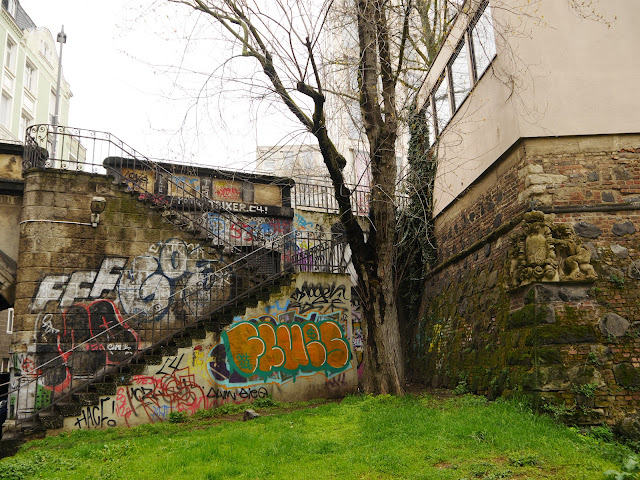


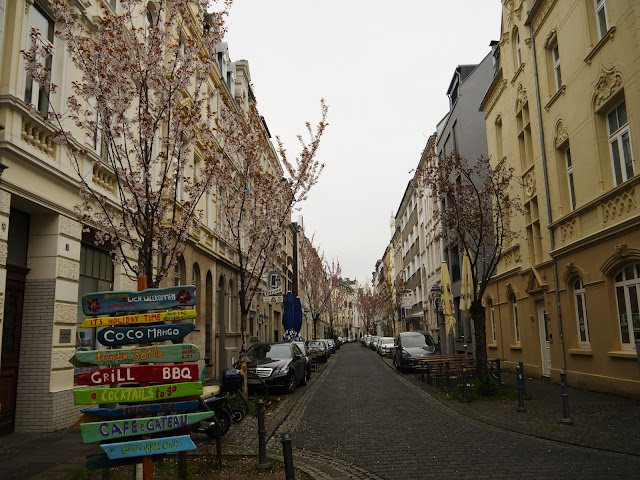

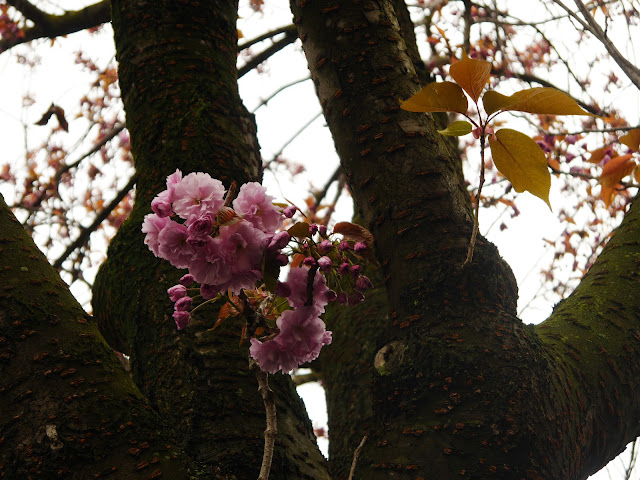






























































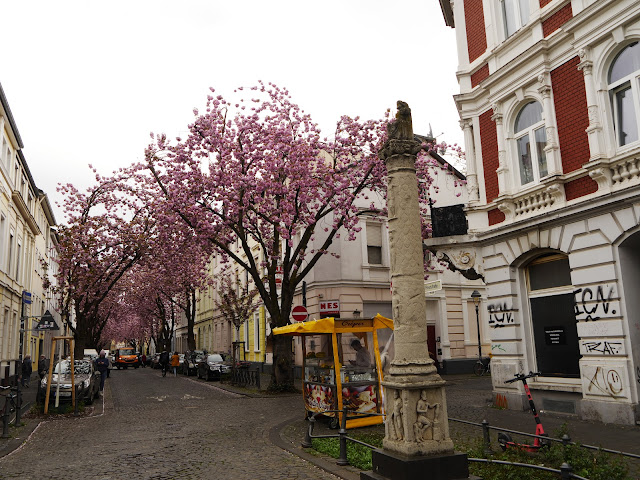























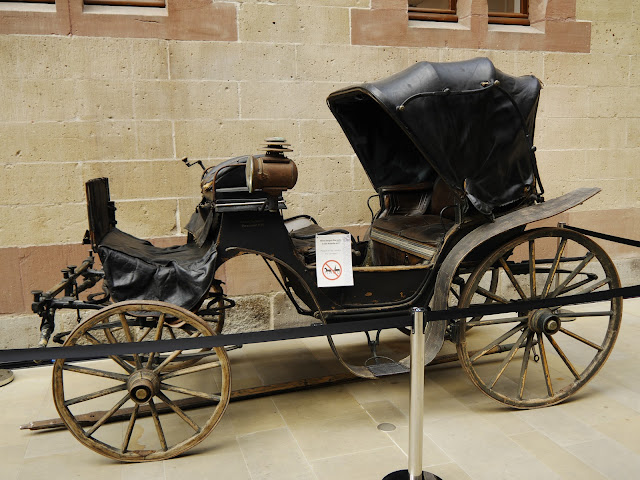



























































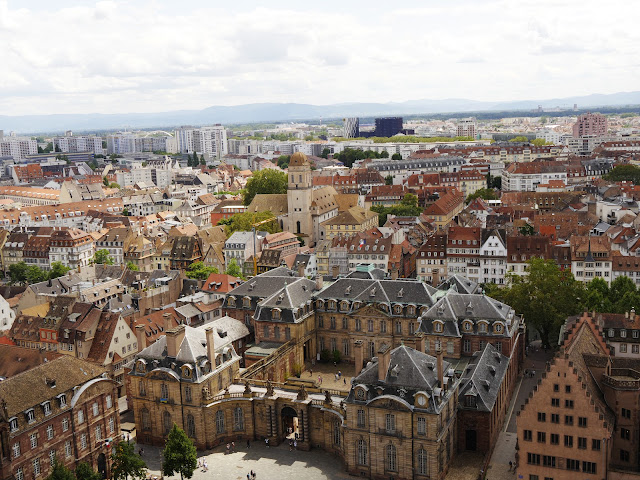





































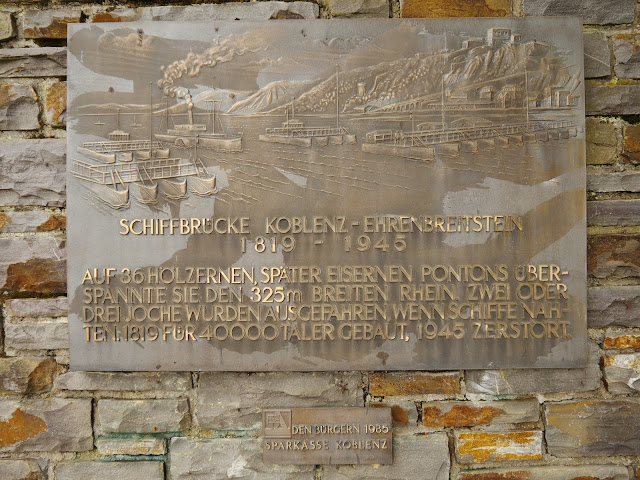









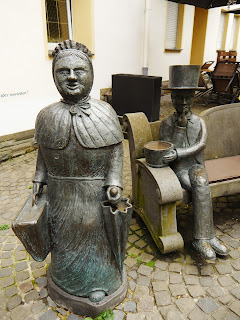




































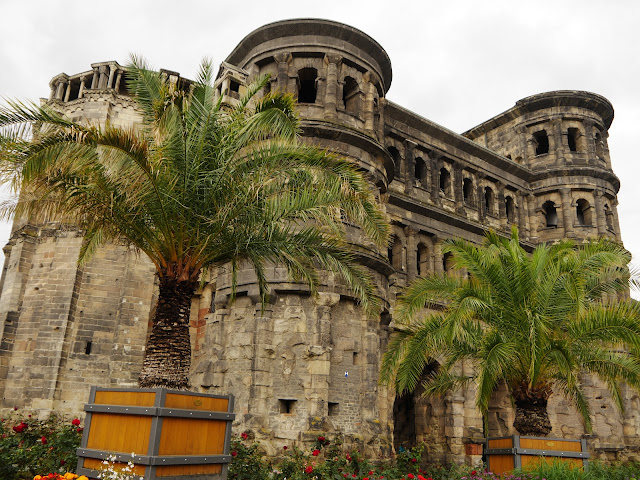


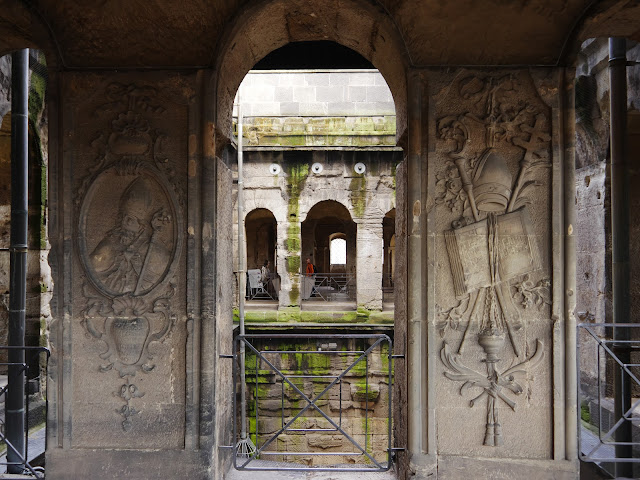


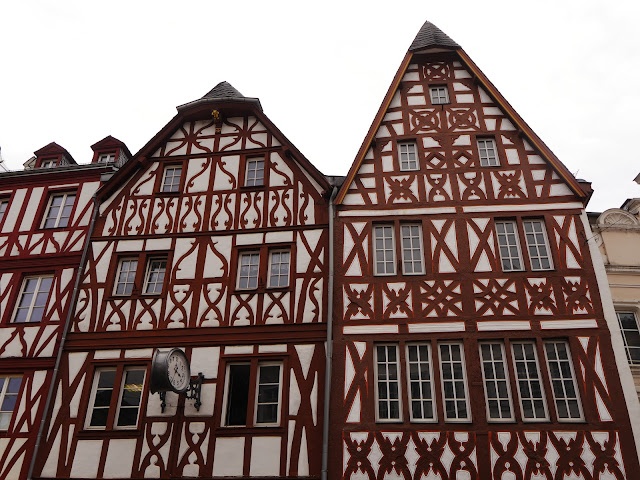








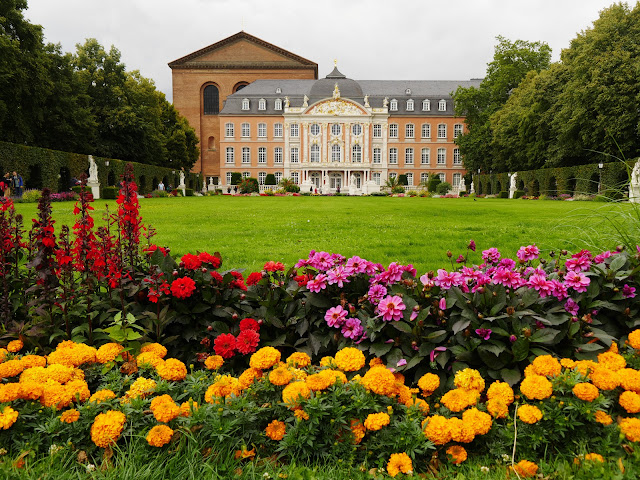















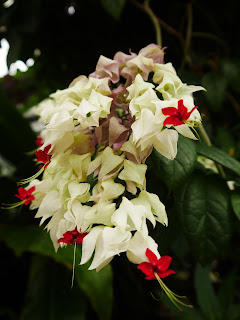








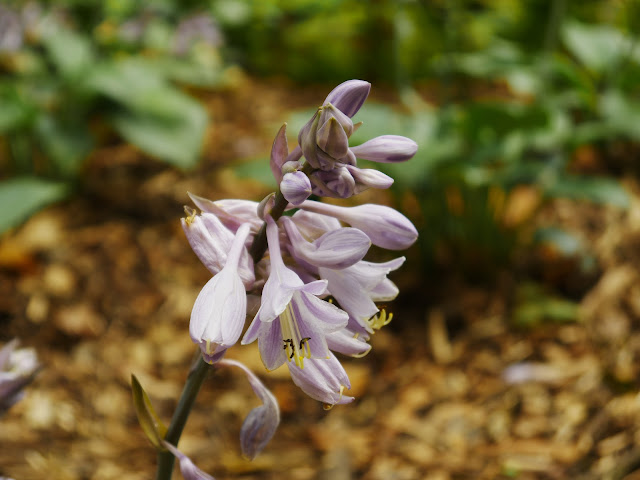













Comments
Post a Comment